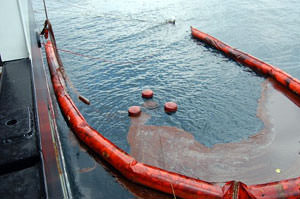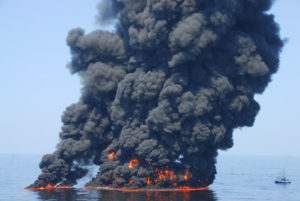The Giant Cloud of Oil Hiding in the Gulf
The Woods Hole Oceanographic Institution is raining on Uncle Sam and BP's well-capping parade. Researchers at the institute say a 22-mile-long, 1.2-mile-wide oil plume deep under the Gulf's surface is degrading much slower than the government's more optimistic claims.
The Woods Hole Oceanographic Institution is raining on Uncle Sam and BP’s well-capping parade. Researchers at the institute say a 22-mile-long, 1.2-mile-wide oil plume deep under the Gulf’s surface is degrading much slower than the government’s more optimistic claims.
Your support matters…Boston Globe:
By the Woods Hole researchers’ calculations, the plume probably still exists today, but government officials said their more recent observations indicate the oil is quickly being degraded by microbes.
The Woods Hole researchers tracked a 1.2-mile-wide cloud of diluted oil and gas, more than 3,000 feet under the surface and starting about 3 miles from the wellhead. They reported in the journal Science that the plume was degrading very slowly in the cold, dark depths, worrying researchers that the pollutants could spell harm for marine life.
Independent journalism is under threat and overshadowed by heavily funded mainstream media.
You can help level the playing field. Become a member.
Your tax-deductible contribution keeps us digging beneath the headlines to give you thought-provoking, investigative reporting and analysis that unearths what's really happening- without compromise.
Give today to support our courageous, independent journalists.





You need to be a supporter to comment.
There are currently no responses to this article.
Be the first to respond.